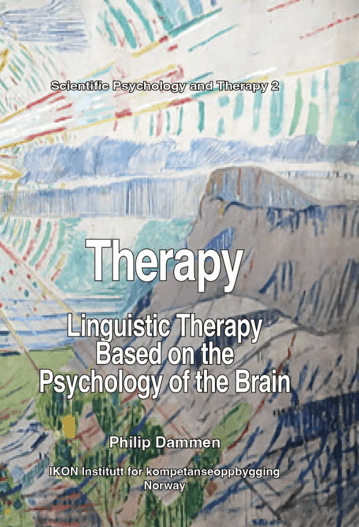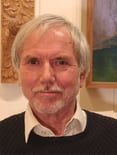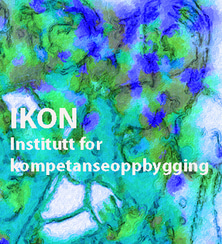Linguistic Brain Therapy, LBT


Linguistic brain therapy is a method for treating mental disorders that solely focuses on the psychological material causing the disorders. It concentrates on mental disorders with a mental basis.
Why the Term "Linguistic Brain Therapy"?
The term "brain therapy" is chosen because it changes the psychological material causing mental disorders without focusing on what happens in the client's external life. However, the client's life situation is indirectly focused on, as the psychological material often stems from life situations and events.
What is the Goal of Linguistic Brain Therapy, LBT?
The goal of linguistic brain therapy is to change mental disorders through predictable and controllable methods.
What Can Linguistic Brain Therapy Be Used For?
Linguistic brain therapy is essential for treating mental disorders with scientifically valid methods and ensures an understanding of what happens to clients when they achieve psychological changes in treatment.
It can be used in education, special education, communication, conflict resolution, upbringing, leadership, mental training, problem-solving, performance preparation, learning, and developing people's coping skills, proficiency, and well-being.
What is the Foundation of Linguistic Brain Therapy, LBT?
The foundation of LBT is the biopsychic units. These are psychological elements containing emotions, described in the book on brain psychology.
What Research Underpins the Development of Linguistic Brain Therapy, LBT?
The development of linguistic brain therapy was based on research on successful therapeutic processes. The goal was to examine how mental disorders are mentally constructed and what happens to the psychological material causing the mental disorders when clients improve from treatment.
Why is Knowledge of Linguistic Brain Therapy Necessary?
Linguistic brain therapy is necessary because it provides solutions to the challenges in psychology and psychiatry and answers the following questions
About mental disorders:
How are mental disorders mentally constructed?
What are the similarities between different mental disorders?
What are the similarities between schizophrenia and other mental disorders?
What are the similarities between the general mental state and the mental disorder?
What laws exist regarding the development of a mental disorder?
What constitutes the unconscious, and how can one connect with repressed psychological material?
About psychological change:
What are the prerequisites for changing the psychological material causing mental disorders?
How can one map the mental disorder to establish a basis for change?
How can one treat mental disorders predictably?
What happens mentally when psychological changes occur in treatment?
How can one control the results obtained during treatment?
How can one utilize clients' mental resources in treatment?
How can one protect clients from mental pain in the treatment situation?
Why can the same methods be used to treat mental disorders and develop joy and proficiency, or possibly other qualities and mental states?
Why do some therapists achieve good results, while others do not?
How can one develop immunity against mental disorders?
What is the foundation for Lingvistic brain Therapy
Linguistic Brain Therapy (LBT) originates from around 7,000 hours of treating approximately 1,000 clients who have had problems with anxiety, panic attacks, post-traumatic stress disorders, obsessive thoughts, phobias, suicidal tendencies, self-harm, aggression, grief reactions, post-traumatic distress, conflicts, depression, lack of self-confidence, performance anxiety, feelings of chaos, anorexia, hypochondria, and schizophrenic tendencies.
What is a Mental Disorder from the brain psychological Understanding?
A mental disorder is caused by psychological material that harbors unpleasant feelings. This material is documentable. This psychological material consists of four elements: feelings, sensory elements, words and statements, and the biological elements that anchor the other elements. These elements are named "biopsychic elements."


Can Linguistic Brain Therapy, LBT, be Applied to All Mental Disorders?
LBT can be used to change all mental disorders as long as the client is intellectually accessible, desires change, is capable of performing the mental operations that the therapist invites, and has a good relationship with the therapist.
How Many Methods are Necessary to Treat Mental Disorders?
Since all mentally anchored disorders are caused by contact with mental elements containing feelings, any psychological change will result from changes in contact with these elements. Consequently, in principle, one main method, albeit with variations, is sufficient to change the psychological material causing the mental disorder.
Will Verbal Treatment Supersede Medical Treatment?
Mental disorders are rooted in, but not caused by, neurobiological and organic material. Therefore, the interesting question is not whether mental disorders have a psychological, biological, or neurobiological basis, but what triggers what? Is the mental disorder caused by mental processes, or is it caused by genetic, neurobiological, or organic conditions?
The answers to this question are less interesting if the most effective way to treat mental disorders is through Linguistic Brain Therapy
philipdammen4@gmail.com
(+47) 94294327
Socials
Contact
Philip Dammen, Dr. Philos
Founder of IKON / researcher, therapist, and emeritus assistant professor in pedagogy at the Norwegian Academy of Music


